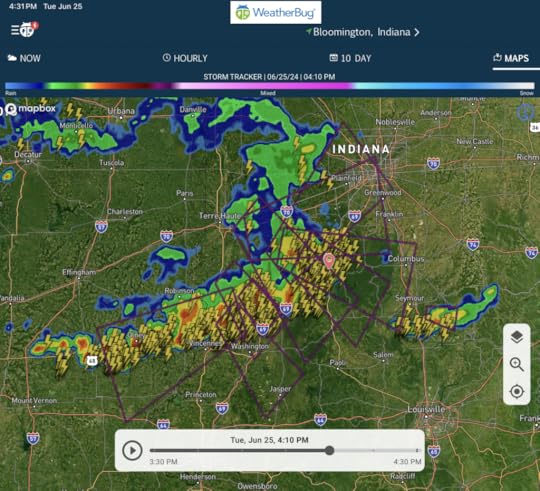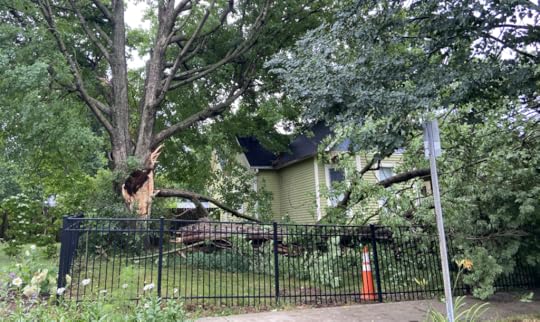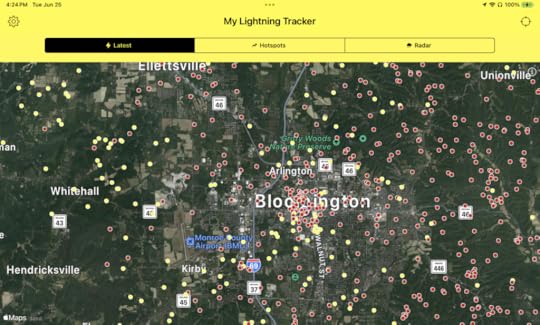A very local storm

It was a derecho, or something like one. The gust front you see in the third image here looks a lot like the storm front in the image above (via Weatherbug, storm tracker view). I’d experienced one twelve years ago, in Arlington, Mass. It felt like a two minute hurricane, and when it was over, hundreds of trees were down. This wasn’t as bad, but TwitteX seemed to agree that a derecho it was. And we did have many broken trees and power outages. Here’s one example of the former:

That’s half a huge silver maple. Very luckily, it missed the house and only trashed the metal fence. Pretty house, too.
There was also a lot of lightning. Dig:

You can barely see the blue dot in the middle, but that’s where we live. One of those dots is about a hundred feet from where I’m writing this.
If you’re into this kind of stuff, I recommend the My Lightning Finder app, which produced the above. Also LightningMaps.org on the Web. That one shows thunder as circles expanding at the speed of sound around a lightning dot. Of course, lots of those lightning dots are lines in clouds, or zig-zags between ground and sky. They aren’t all “strikes.”
But when lightning does strike, one of my favorite storm sounds is a loud crack, then “Cccchhhheeeeeooooowwwwwww” before a BOOM of thunder slams the ground. What you’re hearing after the crack is sound coming off the length of the lightning strike, starting at the ground and moving up to the cloud above, with the volume of the sound and its pitch going down as it originates from farther and farther away along the length of the lightning itself. The BOOM is produced by the top of the lightning bolt, spreading or fanning out inside the cloud, parallel to the ground, so the sound comes at you from the broad side of the aerial end of the bolt. Listen for it the next time you’re in a storm and lightning strikes nearby.
Doc Searls's Blog
- Doc Searls's profile
- 11 followers



